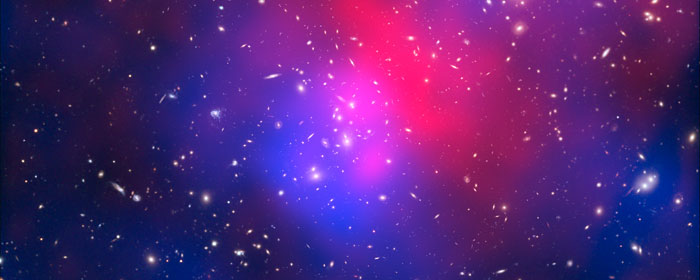A team of scientists has studied the galaxy cluster Abell 2744, nicknamed Pandora’s Cluster. They have pieced together the cluster’s complex and violent history using telescopes in space and on the ground, including the Hubble Space Telescope and ESO’s Very Large Telescope. Abell 2744 seems to be the result of a simultaneous pile-up of at least four separate galaxy clusters and this complex collision has produced strange effects that have never been seen together before.

When huge clusters of galaxies crash together, the resulting mess is a treasure trove of information for astronomers. By investigating one of the most complex and unusual colliding clusters in the sky, an international team of astronomers has pieced together the history of a cosmic crash that took place over a period of 350 million years.
Julian Merten, one of the lead scientists for this new study <1> of cluster Abell 2744, explains: “Like a crash investigator piecing together the cause of an accident, we can use observations of these cosmic pile-ups to reconstruct events that happened over a period of hundreds of millions of years. This can reveal how structures form in the Universe, and how different types of matter interact with each other when they are smashed together.”
“We nicknamed it Pandora’s Cluster because so many different and strange phenomena were unleashed by the collision. Some of these phenomena had never been seen before,” adds Renato Dupke, another member of the team.
more, with full images (there are a lot of galaxies in there!)
http://www.spacetelescope.org/news/heic1111/